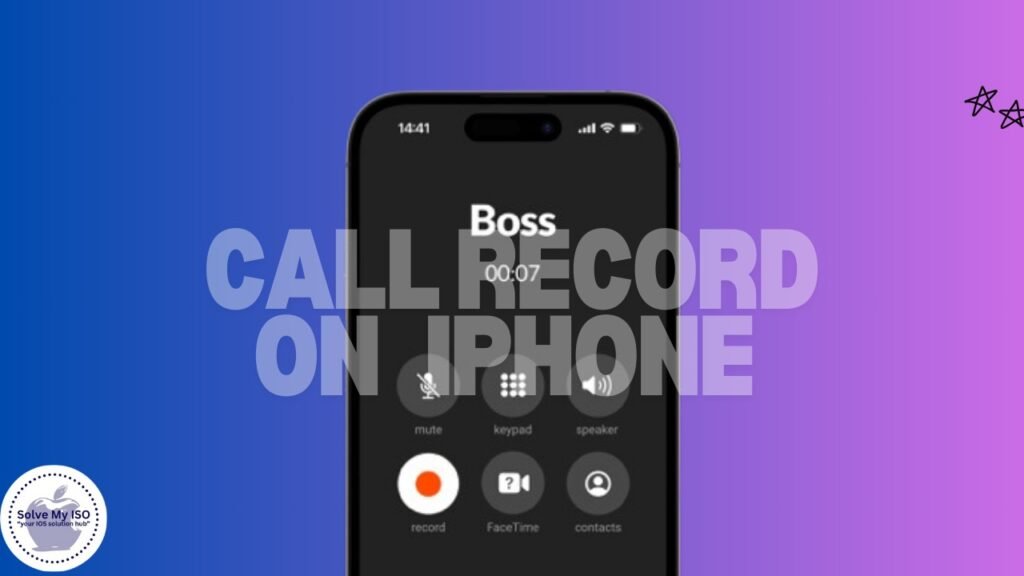Recording phone calls can be an essential tool for a variety of reasons, from preserving important conversations to ensuring accuracy in business dealings. However, it’s crucial to understand the importance and legality of this practice before delving into the methods. In this comprehensive guide, we’ll explore three efficient ways to record incoming calls on your iPhone without relying on third-party applications. Our focus is on methods that prioritize user privacy and compliance with legal standards.
Understanding the Basics of Call Recording
Legal Considerations and Ethical Guidelines
Before you start recording any calls, it’s vital to be aware of the legal implications. Various jurisdictions have different laws regarding call recording. In some places, you may need the consent of all parties involved, while in others, only one-party consent is required. Ignoring these laws can lead to severe consequences, including fines and legal action.
Ensuring You Have Permission to Record
To avoid legal issues, always inform the other party that you intend to record the call and obtain their explicit consent. This approach not only keeps you on the right side of the law but also maintains trust and transparency in your communications.
Using Voicemail to Record Calls
One of the simplest and most effective ways to record incoming calls on your iPhone is by using the voicemail feature. Here’s a step-by-step guide on how to do it:
Step-by-Step Guide
- Initiate a Call: Start by making or receiving a call on your iPhone.
- Merge Call with Voicemail: Tap “Add Call” and dial your own phone number to access your voicemail. Once your voicemail answers, tap “Merge Calls” to create a conference call between you, your contact, and your voicemail.
- Accessing the Recorded Voicemail: After the call ends, check your voicemail inbox. The conversation should be saved as a new message.
Pros and Cons
- Pros: No additional equipment or apps needed; easy to set up.
- Cons: Call quality may degrade; limited by voicemail storage capacity.
Using an External Recording Device
Another reliable method to record calls involves using an external recording device such as another phone or a digital recorder.
Overview
This method is straightforward and doesn’t require any special software on your iPhone. It’s particularly useful if you need higher-quality recordings or wish to avoid potential software-related issues.
Step-by-Step Instructions
- Setup: Place the external recording device near your iPhone.
- Initiate and Record the Call: Make or receive the call on your iPhone and put it on speakerphone. Start recording on the external device.
- Store and Manage the Recording: Save the recorded call securely and make copies if needed.
Quality and Privacy Considerations
- Quality: Ensure the recording environment is quiet to improve sound quality.
- Privacy: Be mindful of where you store the recordings to prevent unauthorized access.
Utilizing Call Forwarding and VoIP Services
The third method involves forwarding your calls to a VoIP service that offers recording capabilities.
Explanation
VoIP services like Google Voice and Skype can record calls, provided you’ve set up call forwarding on your iPhone.
Step-by-Step Guide
- Set Up Call Forwarding: Go to Settings > Phone > Call Forwarding and enter the VoIP service number.
- Record the Call: Once calls are forwarded, use the VoIP service’s recording feature to capture the conversation.
- Access and Manage Recordings: Log into your VoIP account to listen to, download, or share the recordings.
Access and Security
- Ease of Use: Simple setup but may require a subscription.
- Security: Ensure the VoIP service offers robust security measures to protect your recordings.
Comparing Methods: Which One is Right for You?
Selecting the appropriate method depends on several factors including ease of use, recording quality, and privacy considerations.
Ease of Use
- Voicemail: Easiest to set up but might compromise on quality.
- External Device: Requires minimal setup but needs additional equipment.
- VoIP Services: Convenient but might involve a learning curve and costs.
Recording Quality
- Voicemail: Adequate for most purposes but not the best.
- External Device: Can offer high-quality recordings if done correctly.
- VoIP Services: Generally provides good quality but dependent on internet connection.
Privacy and Security
- Voicemail: Relies on carrier security; relatively safe.
- External Device: Highly secure but requires careful storage.
- VoIP Services: Secure if the service prioritizes user privacy.
Conclusion
Recording incoming calls on an iPhone without using third-party apps is not only feasible but can be done effectively through various methods. Whether you opt for using Voicemail, an external recording device, or call forwarding to a VoIP service, each method has its own set of advantages and considerations. Always ensure you’re compliant with legal requirements and prioritize privacy and quality. By understanding and utilizing these methods, you can choose the best approach tailored to your specific needs.
Remember, the key to successful call recording lies in preparation, ethical practices, and utilizing the right tools for the job.
